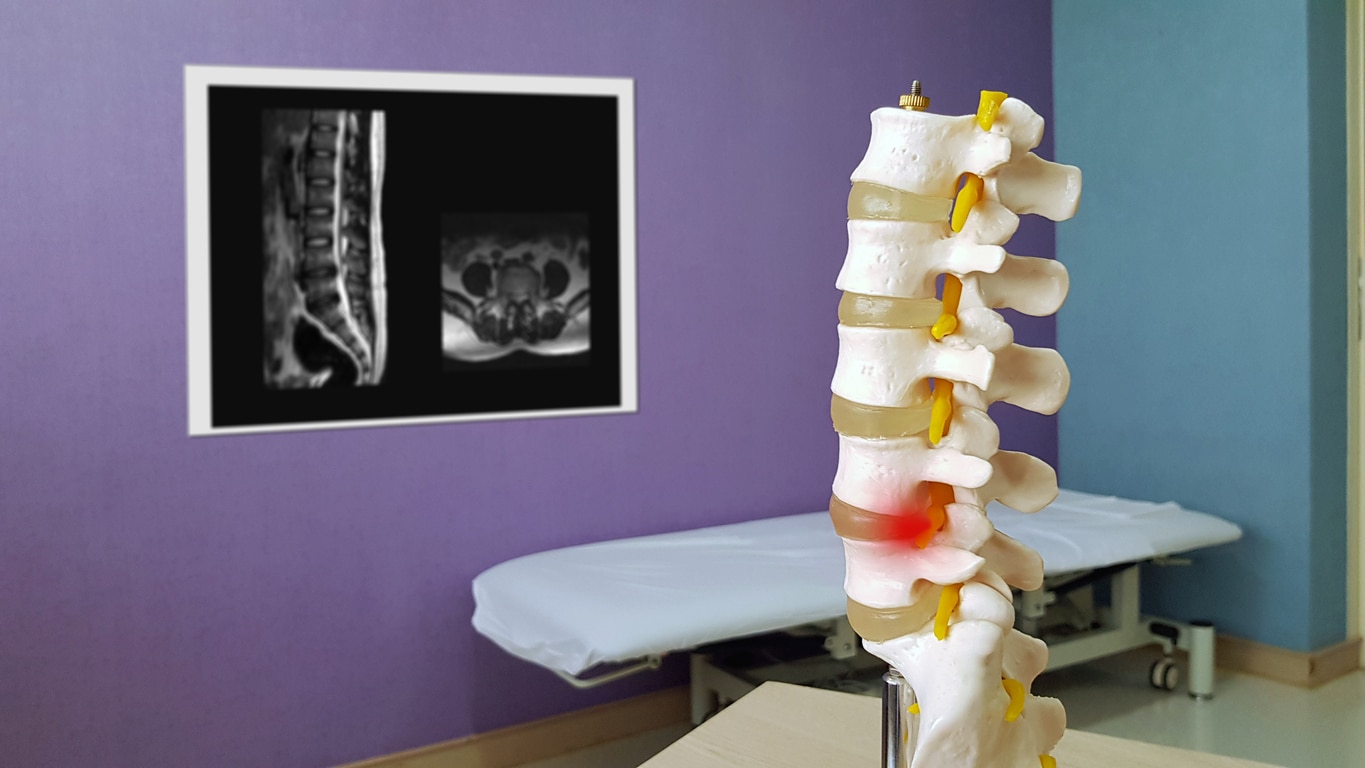Written By: Dr. Evan Steinke, B.Sc, DC.
Lower back pain can stem from a wide range of issues including disc herniations, however, not all herniations are the same. Schmorl’s nodes, named after the pathologist Christian Schmorl, were first described in 1927 and are a form of herniation. While they can occur in any part of the spine, they are most common in the middle and lower regions.
To better understand what a disc herniation is let’s first look at the structure of the spine. The spine is made of a series of vertebrae, bony structures with a hollow channel running down the back side that encases our spinal cord. Vertebrae by themselves we be extremely rigid and cause our backs to be stiff and unable to bend. To be flexible, the bones are connected to each other by a series of discs. The discs are made of a fibrous outer layer that allows for some movement between bony levels and an inner gelatinous layer that allows for shock absorption.
Disc herniations, sometimes referred to as “slipped discs”, are when the disc sandwiched between the two bony vertebrae is ruptured in such a way that the inner gelatinous fluid is released. The most common form is when the posterior aspect of the disc is ruptured, and the fluid pushes out towards the spinal cord. This can trigger nerve irritation that leads to symptoms such as pain, numbness, or weakness wherever the affected nerve travels (often down the leg).
Schmorl’s nodes differ in that they are a vertical type of herniation. Rather than the inner fluid of a disc being pushed out the front or back it is pushed up or down into the bony vertebrae. Despite their first description nearly a hundred years ago there is still no consensus on the cause of Schmorl’s nodes. Some researchers view Schmorl’s nodes as a secondary finding of an underlying disease such as Scheuermann’s disease or lumbar disc degeneration. In fact, most Schmorl’s nodes are asymptomatic, and they are often incidental findings on imaging reports such as Xray or MRI. However, in some patients they can cause significant chronic pain and lead to reduced quality of life.
Treatment for Schmorl’s nodes often begins with conservative care, such as chiropractic, as they are often seen in conjunction with other spinal conditions. If unresponsive more invasive treatments such as nerve blocking or surgery can be considered.
If you suspect that you might have a Schmorl’s node mention this article to your chiropractor or physician. Expect your doctor to do a thorough examination and to rule out other possible causes of your symptoms first and be ready for possible imaging such as X-ray or MRI.
Contact AST to schedule your appointment today.
References:
1) Kyere KA, Than KD, Wang AC, Rahman SU, Valdivia-Valdivia JM, La Marca F, Park P.
Schmorl's nodes. Eur Spine J. 2012 Nov;21(11):2115-21. doi: 10.1007/s00586-012-2325-9. Epub
2012 Apr 28. PMID: 22544358; PMCID: PMC3481099.
2) https://radiopaedia.org/articles/schmorl-nodes-3?lang=us



